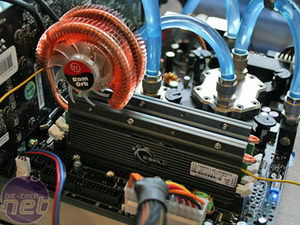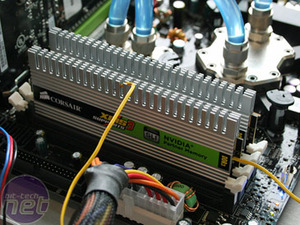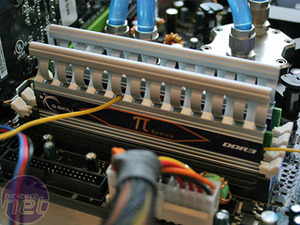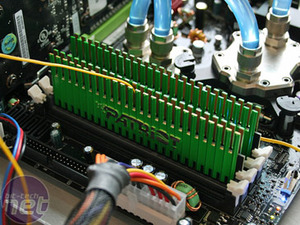4GB DDR3 Memory Roundup - Part 1
October 8, 2008 | 08:16
Companies: #corsair #gskill #samsung #thermaltake

Temperature Performance
We took temperature readings as close to the BGA memory ICs as possible, as well as centrally on the heatsink or heatspreader to determine two things:- What the overall cooling performance is at a reference standard of 1,600MHz at 1.7V, and their overclocked and overvolted values. This will see how well the cooling technologies perform for the job they're tasked with.
- What the difference in temperature is between the heat producing parts and heat dissipating parts - regardless of actual temperature this should be as uniform as possible to highlight the actual efficiency of the heatsink or heatspreader.
We've thrown in other memory types like the Patriot Viper (2GB) and Crucial Ballistix (2GB) we had in the labs, just to round off the field a little.
NOTE: While we did test the RamOrbs (at some expense of my sanity) we haven't tested Corsair Dominator tri-fan airflow and Patriot's Vortex because neither is a design of the heatisnks themselves, it's merely an optional extra to eke out a bit of extra performance.
At an baseline 1.7V, the Corsair DHX heatsinks come out trumps for a passively cooled solution, with a nice and low 32-33˚C, although the Patriot Viper series is not far behind but bear in mind that it is only single sided compared to Corsair's dual sided DIMM. Up from these at 4-5˚C higher are the G.Skill heatsinks with the Thermaltake RamOrbs (fan off) proving ever so slightly better cooling than the G.Skill Pis.
With the fan on though, the RamOrbs are easily the best performing out there by several degrees, and even when overvolted the fins only hit 30˚C but the difference between heatpipe and memory ICs is 1.3˚C compared to Corsair DHX's 0.3˚C or Patriot Viper's 0.3-0.5˚C.
While overvolted by the lowest margin, the Corsair is still the best performing at 38.6˚C, compared to 39.1˚C, for the G.Skill GT1s with RamOrbs and 40.5˚C for the G.Skill Pi. The Patriot Vipers are even higher at 42˚C but that can be mostly attributed to the very high 2.0V core voltage and 2,000MHz frequency, versus just 1.8V and 1,600MHz on the Corsair.
Whatever the large heatsinks are though, they are still clearly better than the bog standard low profile heatspreaders Crucial uses across its range - these continually perform several degrees hotter, and in fact the overvolted Corsair DHX still performs better than the Ballistix at the baseline 1.7V.

MSI MPG Velox 100R Chassis Review
October 14 2021 | 15:04












Want to comment? Please log in.